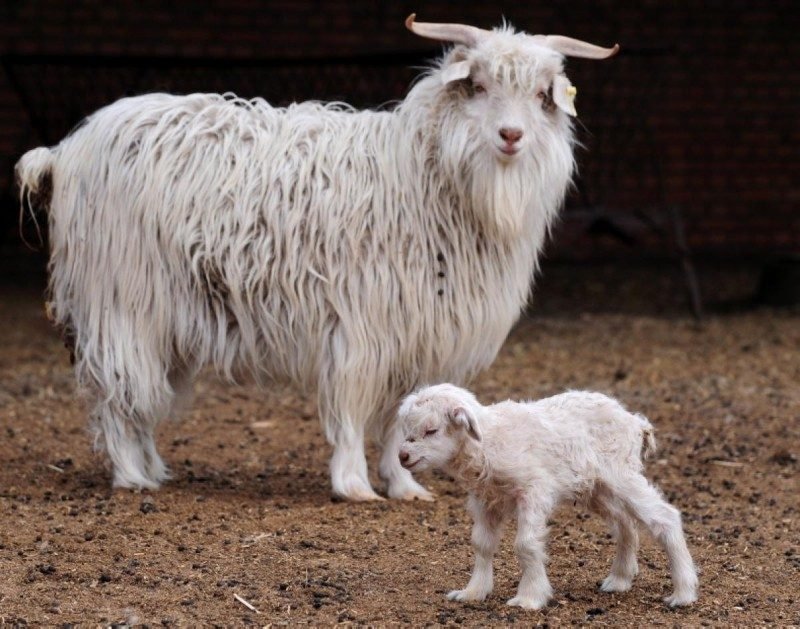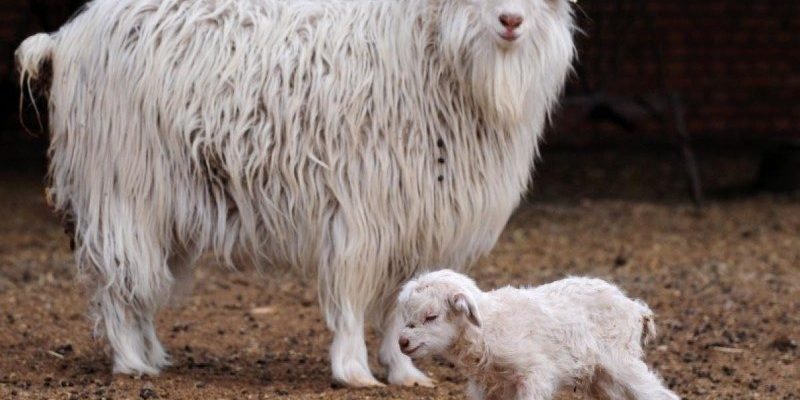
The history of the cashmere goat dates back thousands of years, woven into the tapestry of cultures in the mountainous regions of Central Asia. Knowing a bit about these goats can deepen your appreciation for the warmth around your shoulders. So, let’s dive into the fascinating world of cashmere goats, exploring their history, unique traits, and the various uses of their luxurious fiber.
A Quick History of Cashmere Goats
The story of cashmere goats begins in the regions of Mongolia, China, and Tibet, where they have been raised for centuries. Originally, nomadic herders relied on these goats for survival, using their fiber to make clothing and blankets that kept them warm during harsh winters. The name “cashmere” itself actually comes from the Kashmir region of India, a place renowned for its beautiful textiles made from goat hair.
Let me explain: cashmere goats are special because they produce a soft undercoat, which is shed naturally in spring. This downy undercoat is what we harvest, and it’s what gives cashmere its signature softness. In the early days, cashmere was a luxury reserved for the elite. It took skill to collect and process the fibers, so only the wealthiest could afford to wear it.
As trade routes expanded, cashmere spread across cultures and continents. Today, it’s not just a luxury fabric; it’s a symbol of elegance and sophistication, available to many people around the globe. However, the quality can vary widely because not all cashmere comes from the same source.
Understanding Cashmere Goat Traits
Cashmere goats, specifically the *Capra hircus*, have some unique traits that make them well-suited for producing this exquisite fiber. First, they have thick, dual-layered coats. The outer layer is coarse and protects against the elements, while the inner layer is where the fine cashmere fibers are found. This combination is perfect for surviving in the cold, high-altitude regions they call home.
You might be wondering how these goats manage to keep their coats so fluffy. Well, during winter months, they grow this thick undercoat, and as temperatures rise in spring, they naturally shed it. This is the time when herders gather cashmere. It’s a bit like nature’s way of providing us with this soft treasure!
Another fascinating trait is their hardiness. Cashmere goats are tough creatures. They thrive in rugged terrains and can withstand extreme weather. They’re also quite social and often roam together in herds, which makes for a charming sight when you see them frolicking in the mountains.
How Cashmere Is Harvested
When we think of cashmere, it’s essential to understand how it’s collected. The process is quite gentle and sustainable, ensuring the goats remain healthy and happy. Each spring, herders gather to comb the goats, carefully collecting the soft, undercoat fibers that the animals have shed. This method is called “collecting the fleece” and is done by hand, ensuring that the goats aren’t harmed.
Here’s the thing: it takes a lot of fleece to make cashmere products. To make just one cashmere sweater, you might need the fleece from about three to five goats! This is why quality cashmere is often more expensive than other fibers. It’s not just about the softness; it’s also about the sheer amount of work that goes into collecting it.
Once harvested, the fibers are cleaned—removing any dirt or debris—before being spun into yarn. Different spinning techniques can create varying textures and qualities in cashmere, which is why you’ll notice differences between brands. It all boils down to how well the goats are cared for, the harvesting technique, and the processing methods used.
The Primary Uses of Cashmere
Now that we know how cashmere is harvested, let’s talk about its various uses. Cashmere’s luxurious softness and insulating properties make it perfect for a wide range of clothing items. Here are some of the most common uses:
- Clothing: Cashmere sweaters, scarves, and cardigans are popular because they’re incredibly warm and lightweight.
- Blankets and Throws: Cashmere throws are a cozy addition to any home, providing warmth without the bulk.
- Accessories: Cashmere gloves, hats, and socks are perfect for keeping you cozy in winter.
The beauty of cashmere is that it can be blended with other fibers, making it versatile. For instance, cashmere blends with silk or wool can create softer textures or added durability. It’s often used in luxury fashion, making it a sought-after material for high-end brands.
Honestly, once you experience the warmth of cashmere, it’s hard to go back to regular wool! It’s like wrapping yourself in a warm hug. But remember, it requires care and attention to keep cashmere looking and feeling its best.
Caring for Cashmere Products
If you’ve invested in cashmere clothing or accessories, you’ll want to know how to care for them properly. Here are some tips to keep your cashmere items looking fresh and new:
- Hand Wash or Dry Clean: It’s best to wash cashmere by hand in cold water with a gentle detergent. If you prefer, you can take it to a dry cleaner.
- Air Dry: Always lay cashmere flat to dry, away from direct sunlight. Hanging it can cause it to stretch.
- Store Carefully: When not in use, keep cashmere items in a cool, dry place. Use cotton bags for storage to avoid moth damage.
Taking these simple steps can extend the life of your cashmere and keep it looking beautiful for years. It’s a small effort for something so luxurious!
Why Invest in Cashmere? The Benefits
Investing in cashmere isn’t just about acquiring luxury; it comes with a host of benefits. First, cashmere is incredibly warm and lightweight. You can wear a thin cashmere sweater and stay warm without feeling bulky, which is perfect for layering.
Moreover, cashmere is remarkably breathable. This means that even when you’re bundled up, you won’t overheat. It’s almost like having a smart fabric that knows how to keep your body temperature just right—pretty neat, right?
Another significant benefit is its durability. With proper care, cashmere can last for years, making it a worthwhile investment. Think of it as a classic piece in your wardrobe that can withstand trends and time, providing comfort and style for seasons to come.
And let’s not forget the timeless appeal. Cashmere never goes out of style. Whether you’re dressing up for a fancy dinner or heading out for a casual day, cashmere fits the bill beautifully. It’s a fabric that says, “I care about quality, and I appreciate a little luxury in my life.”
The Future of Cashmere Goats
As we look ahead, the future of cashmere goats and the industry surrounding them is evolving. With increased demand for sustainable and ethical fashion, more consumers are seeking information about where their cashmere comes from. This has led to better practices in goat farming and a greater emphasis on animal welfare.
Farmers are adopting more sustainable methods for raising cashmere goats, focusing on their health and the environment. This includes better grazing practices and minimizing the impact on the land. As awareness grows, many brands are also committing to transparency in their supply chains, ensuring customers know the story behind their cashmere.
It’s exciting to think about how these changes can lead to a more sustainable future for cashmere production, benefiting both the goats and the consumers who cherish their products. In a world where every purchase matters, understanding the impact of your choices is key.
In conclusion, cashmere goats are remarkable animals that give us a luxurious fiber valued for its softness and warmth. Their unique traits, coupled with a rich history and thoughtful care, make cashmere more than just a material; it’s a symbol of comfort and style. So, next time you reach for that cozy cashmere sweater, you’ll know a bit more about the incredible goats behind it!

